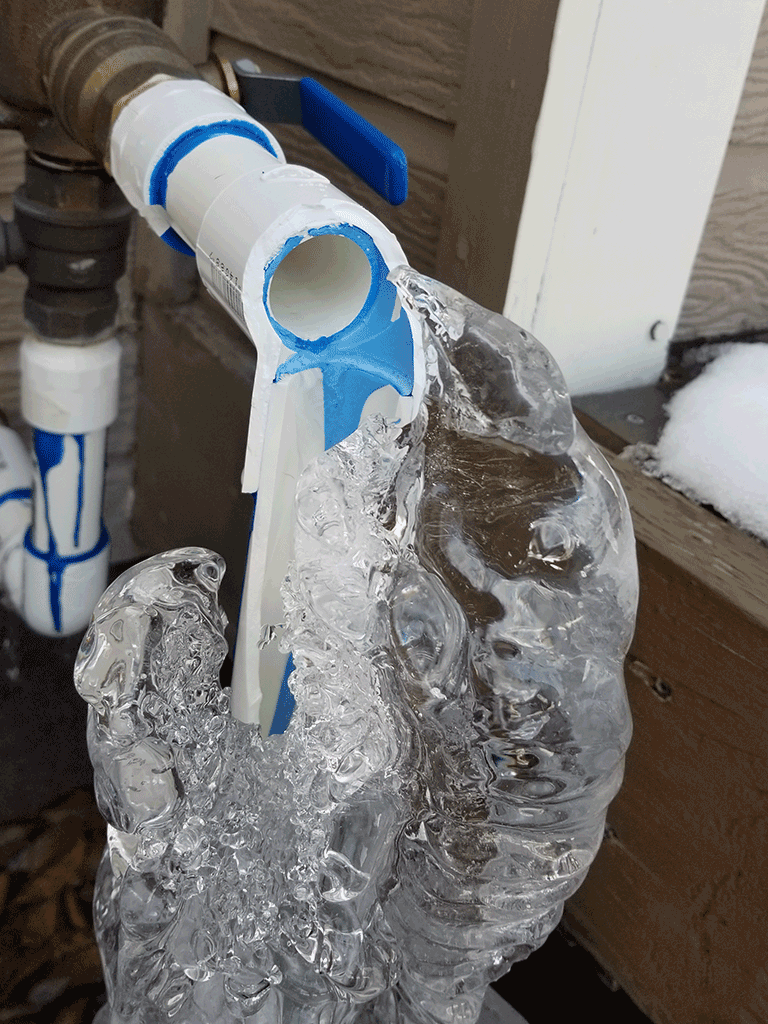Important Advice to Prevent Frozen Pipes in Winter
Important Advice to Prevent Frozen Pipes in Winter
Blog Article
Were you in search of advise on Preventing and dealing with frozen pipes?

Cold weather can ruin your pipes, especially by freezing pipelines. Below's how to prevent it from happening and what to do if it does.
Intro
As temperatures decrease, the danger of icy pipes boosts, possibly leading to pricey repair work and water damages. Recognizing exactly how to stop frozen pipes is vital for home owners in cool environments.
Avoidance Tips
Protecting susceptible pipelines
Wrap pipelines in insulation sleeves or utilize warmth tape to secure them from freezing temperature levels. Focus on pipes in unheated or exterior locations of the home.
Home heating strategies
Keep indoor spaces sufficiently heated up, specifically locations with pipes. Open cabinet doors to permit cozy air to distribute around pipes under sinks.
Just how to identify icy pipelines
Try to find reduced water circulation from faucets, unusual odors or sounds from pipes, and visible frost on subjected pipelines.
Long-Term Solutions
Structural adjustments
Take into consideration rerouting pipes away from exterior walls or unheated areas. Include additional insulation to attic rooms, basements, and crawl spaces.
Updating insulation
Buy high-grade insulation for pipelines, attic rooms, and walls. Appropriate insulation helps preserve constant temperature levels and lowers the risk of frozen pipelines.
Protecting Outdoor Pipes
Yard hoses and outdoor taps
Disconnect and drain yard tubes before winter months. Mount frost-proof faucets or cover outside faucets with shielded caps.
Understanding Icy Pipelines
What causes pipelines to ice up?
Pipes ice up when subjected to temperatures below 32 ° F (0 ° C) for prolonged durations. As water inside the pipes freezes, it expands, taxing the pipe walls and potentially creating them to rupture.
Dangers and damages
Frozen pipelines can cause water supply disruptions, property damages, and expensive fixings. Burst pipelines can flood homes and cause considerable structural damage.
Signs of Frozen Pipeline
Determining frozen pipes early can stop them from bursting.
What to Do If Your Pipes Freeze
Immediate actions to take
If you believe frozen pipes, keep taps open up to soothe stress as the ice melts. Make use of a hairdryer or towels soaked in warm water to thaw pipelines gradually.
Verdict
Protecting against icy pipes calls for positive procedures and quick responses. By understanding the reasons, signs, and safety nets, homeowners can shield their pipes throughout cold weather.
5 Ways to Prevent Frozen Pipes
Drain Outdoor Faucets and Disconnect Hoses
First, close the shut-off valve that controls the flow of water in the pipe to your outdoor faucet. Then, head outside to disconnect and drain your hose and open the outdoor faucet to allow the water to completely drain out of the line. Turn off the faucet when done. Finally, head back to the shut-off valve and drain the remaining water inside the pipe into a bucket or container. Additionally, if you have a home irrigation system, you should consider hiring an expert to clear the system of water each year.
Insulate Pipes
One of the best and most cost-effective methods for preventing frozen water pipes is to wrap your pipes with insulation. This is especially important for areas in your home that aren’t exposed to heat, such as an attic. We suggest using foam sleeves, which can typically be found at your local hardware store.
Keep Heat Running at 65
Your pipes are located inside your walls, and the temperature there is much colder than the rest of the house. To prevent your pipes from freezing, The Insurance Information Institute suggests that you keep your home heated to at least 65 degrees, even when traveling. You may want to invest in smart devices that can keep an eye on the temperature in your home while you’re away.
Leave Water Dripping
Moving water — even a small trickle — can prevent ice from forming inside your pipes. When freezing temps are imminent, start a drip of water from all faucets that serve exposed pipes. Leaving a few faucets running will also help relieve pressure inside the pipes and help prevent a rupture if the water inside freezes.
Open Cupboard Doors
Warm your kitchen and bathroom pipes by opening cupboards and vanities. You should also leave your interior doors ajar to help warm air circulate evenly throughout your home.

I recently found that entry about How to Prevent Your Pipes From Freezing when browsing on the web. In case you enjoyed reading our post plz remember to share it. We enjoy reading our article about Prevent Frozen Pipes .
Click Here Report this page